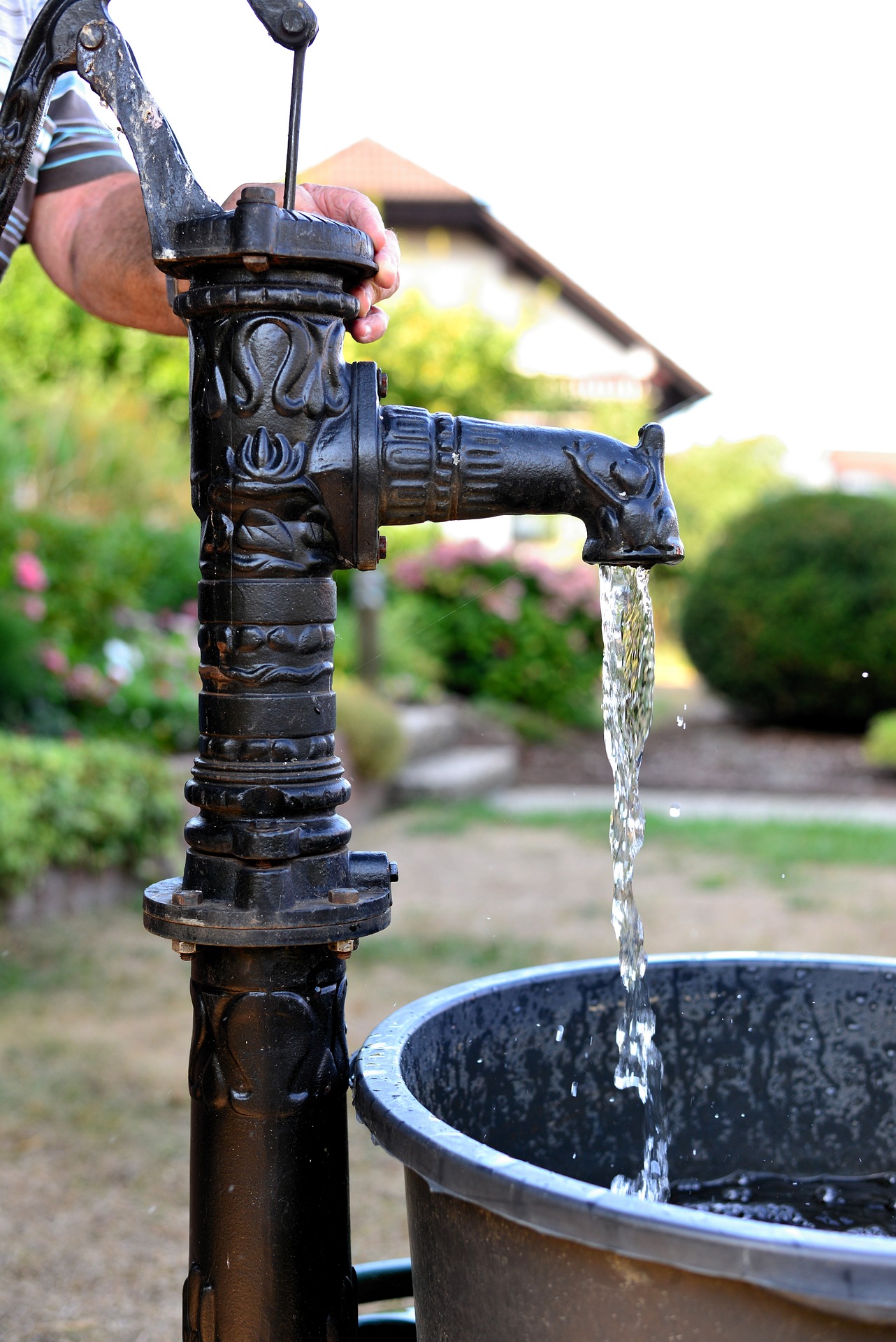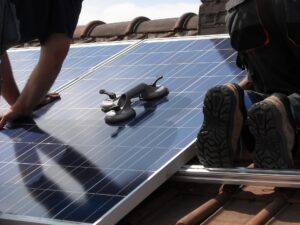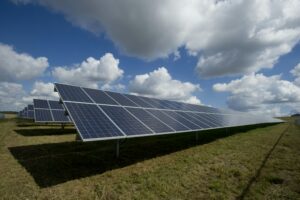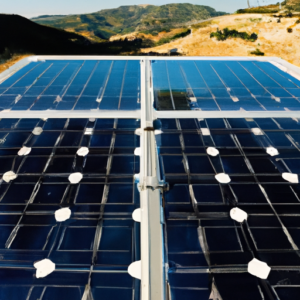Introduction to Solar Water Pumps
What is a Solar Water Pump?
A solar water pump plays a crucial role in the symphony of renewable energy solutions. It’s a system designed to utilize solar energy, converting it into electrical power to pump water from various sources. Picture this – you’re capturing the free energy from our nearest star and using it to extract one of our planet’s most essential elements. If that isn’t an epic origin story, I don’t know what is!
The Significance of Solar Water Pumps
Just imagine the global application; these machines are a lifeline from irrigation in remote off grid communities to supplying drinking water in urban homes. They’re a step towards achieving sustainable development, significantly reducing reliance on fossil fuels, and ultimately embracing a green lifestyle.
The Inner Workings
The Role of Solar Panels
It all begins with solar panels, the powerhouse of a solar water pump system. Fitted with photovoltaic cells, they capture sunlight and convert it into direct current (DC) electricity. It’s like having your personal army of sun-worshippers, except instead of building monolithic structures, they’re pumping water for you.
Understanding Water Pump Mechanics
Once the solar panels have done their job, it’s over to the pump. The DC electricity powers the pump’s motor, initiating the pumping process. It’s like having a weightlifter working tirelessly, hoisting buckets of water from the source and delivering it to your doorstep (or crop field or water storage tank).
Diving into the Different Types of Solar Water Pumps
Surface Pumps: The Long-Distance Runner
If solar water pumps were athletes, surface pumps would be long-distance runners. They’re designed for moving water over vast distances or horizontal terrains. From watering your petunias to supplying hydration for a whole herd of cattle, these champs are up for the job. They’re particularly nifty when your water source is a surface body like a lake, river, or pond.
Submersible Pumps: The Deep Sea Divers
Meet the divers of the solar water pump world: submersible pumps. These daredevils thrive in the depths, pumping water from wells or boreholes that can be hundreds of feet deep. So whether you’ve got a water table that’s playing hard to get or you’re tapping into a deep aquifer, these pumps have got your back.
Reaping the Benefits of Solar Water Pumps
Harnessing the power of the sun to pump water may sound like sci-fi, but the benefits of solar water pumps are very much grounded in reality. And let’s just say they’re quite impressive.
Reducing Carbon Footprint
You’re essentially signing up for a cleaner, greener planet by choosing a solar water pump. They significantly reduce the carbon footprint by using a renewable energy source than conventional diesel or electric pumps. It’s like swapping your gas-guzzling car for a snazzy, eco-friendly electric vehicle!
Saving on Energy Costs
Solar water pumps run on sunlight, which is absolutely free. Once the initial investment is recovered, the only cost is the minimal maintenance required. Compare this with the recurring fuel or electricity bills of conventional pumps, and it’s clear to see why they are winning hearts (and wallets).
Reliable in Remote Locations
If you’re in a remote location where access to electricity is as rare as spotting a unicorn, a solar water pump can be your reliable water source. With ample sunlight, these pumps can operate efficiently without any dependence on an external electricity supply. It’s like having a dependable buddy who’s always there, no matter where you are.
Low Maintenance
With no moving parts in the solar panels and fewer moving parts in the pump than in a conventional engine, they require less maintenance. This saves you time and effort and makes these systems more durable in the long run. You know what they say, “Less fuss, more freedom!”
Increasing Property Value
By installing a solar water pump, you could potentially increase the value of your property. With the shift towards sustainable living, eco-friendly installations like these are becoming a real selling point. It’s like giving your property a “green makeover,” and who doesn’t love a good makeover?
Promoting Sustainable Living
The use of solar water pumps is in line with the global shift towards more sustainable lifestyles. By using this renewable energy source, you’re contributing to the global effort to combat climate change and conserve our planet’s resources. It’s like joining an international team of eco-warriors!
So, it’s safe to say that the benefits go far beyond just pumping water. They touch upon environmental sustainability, financial savings, reliability, and even property value. The sun, it seems, has a lot more to offer us than just daylight.
Understanding the Challenges of a Solar Water Pump
While they offer various benefits, it’s also important to understand the challenges and limitations associated with their use. Remember, it’s not always sunshine and rainbows (though a little extra sunshine would always be welcome!).
Installation and Maintenance
Let’s be real; installing a solar water pump isn’t a walk in the park. It might require professional assistance. And once installed, regular check-ups and timely maintenance are crucial to ensure its longevity. This might include checking the solar panels for damage, ensuring the wiring is intact, and verifying the pump’s proper functioning. But hey, anything worth having is worth a bit of elbow grease, right?
A Dance with the Weather
Your solar water pump is a sun enthusiast. It thrives in sunny weather but could be a tad sluggish on cloudy or rainy days. This makes solar water pumps more efficient in regions with consistent sunshine. However, it’s not all doom and gloom on overcast days. Modern solar panels can still generate some electricity from diffuse sunlight, though the output will be reduced.
Initial Costs
Solar water pumps can have higher upfront costs than conventional electric or diesel pumps. This includes the cost of the pump, solar panels, wiring, batteries (if needed), and installation. While these costs might seem steep initially, remember that the operational costs are minimal. You’re basically trading fuel costs for sunshine. And let’s be honest; sunshine comes without a price tag!
Battery Backup
If you need the pump to operate during the night or during periods of low sunlight, you’ll need a battery backup system. This means an additional cost; the batteries themselves require maintenance and eventual replacement. However, if your water needs align with daylight hours (like in most irrigation scenarios), you might just get away without one!
Pumping Capacity Limitations
The pumping capacity is directly related to the amount of sunlight available. This means that the pumping capacity may be limited during winter months, on cloudy days, or outside daylight hours. This requires careful planning to ensure your water needs are met consistently.
Understanding these challenges can help make an informed decision and plan for a successful solar water pump system. Remember, the goal is not to paint an overly rosy picture but to equip you with the knowledge to navigate any potential hurdles gracefully and easily. With this mindset, you’ll be harnessing the sun’s power like a pro in no time!
Factors to Consider
Your Water Needs
Think of this as a matchmaking process. You’ve got to find the pump that aligns with your needs. Are you pumping from a well or a surface source? Is it for irrigation, livestock, or domestic use? Understanding your needs will help you make an informed decision.
Budget and Available Resources
Consider your financial boundaries and available resources. Can you afford the initial investment? How about the cost of installation and maintenance? Additionally, evaluate your location’s solar potential.
Geographical Considerations
Your geographical location and the nature of your water source play significant roles in determining the suitability of a solar water pump. The availability of sunlight, the depth or distance of your water source, and the terrain are all crucial factors to consider.
Solar Water Pumps and Sustainable Agriculture
Farming and sunshine have been inseparable since, well, forever. But now, we’re not just relying on the sun to grow crops; we’re using it to power our irrigation systems too!
Imagine this: It’s the crack of dawn, the rooster crows, and as the sun begins its ascent, your solar water pump gets to work. It’s like having a diligent farmhand that starts work with the sun, powered by its rays, tirelessly pumping water to hydrate your crops. Welcome to the age of sustainable agriculture, my friends.
Solar Water Pump Benefits for Farmers
Having a solar water pump can be a game-changer for farmers, particularly those in remote or off-grid areas. It’s like having a dependable workhorse that doesn’t eat much (well, it feasts on sunshine, but that’s free!). Farmers can now have reliable access to water, drastically reducing the risk of crop failure due to water shortage.
Driving Efficiency in Irrigation
Solar water pumps allow for more efficient use of water resources. Paired with modern irrigation techniques like drip or sprinkler irrigation, they ensure that every precious drop of water is put to good use, minimizing wastage. It’s like using a watering can with precision, delivering just the right amount of water to each plant.
Promoting Self-Sufficiency
With a solar water pump, farmers aren’t at the mercy of erratic electricity supply or escalating fuel costs. It’s a step towards self-sufficiency, powered by an abundant and renewable energy source. It’s like being handed the reins to your water supply.
Financial Incentives
Many regions offer financial incentives, grants, or subsidies for adopting solar technology, including solar water pumps. For farmers, this could mean a significant reduction in the upfront costs. It’s like getting a little help to push-start your journey towards sustainability.
Conclusion: Towards a Sunny Future
Solar water pumps are nothing short of a marvel of modern technology. They harness the sun’s power to meet our water needs in an environmentally friendly and economically viable way. They’re paving the way toward a sustainable future where we can quench our thirst without draining the planet’s resources.
And, if you ever find yourself having a sunny chat with a fellow solar enthusiast, you can now regale them with tales of how solar water pumps are changing the world, one drop at a time!
Solar Water Pump FAQs
Do solar water pumps require a lot of space?
The space required largely depends on the system’s size, which is typically determined by your water needs.
Is it possible to store the excess energy produced?
Yes, with the right setup, storing excess energy in batteries for use at night or on cloudy days is possible.
Can I install a solar water pump myself?
While it’s possible, getting professional help is generally recommended due to the technical aspects involved in the installation.
Can they be used for large-scale irrigation?
Yes, they can. There are many high-capacity solar pumps available that are suitable for large-scale irrigation.
What happens during winter?
Solar water pumps can still function in winter, albeit less efficiently. Snow and ice should be removed from the panels to ensure they receive adequate sunlight.





Pingback: Facts About Solar Energy: Harnessing the Sun's Power
Pingback: Most Efficient Solar Panels: A Comprehensive Guide
Pingback: Solar Panel Kits: Embrace the Convenience of Solar Power
Pingback: How Do Solar Panels Work: A Guide for Curious Minds
Pingback: Compost Tea: The Elixir for Your Garden - Eco Life Wise
Pingback: The Solar Battery: Ensuring A Future of Sustainable Energy
Pingback: What Is Sustainability? Unlocking the Power to Transform Our World
Pingback: Solar Farms: Harnessing the Power of the Sun - Eco Life Wise
Pingback: Facts About Recycling: Conserving Resources & Building Sustainability
Pingback: Sustainable Shoe Brands: A Step Towards a Greener Future
Pingback: Why Recycle? Your Ultimate Guide to the Big Green Reason
Pingback: Pros and Cons of Solar Energy: Weighing it Up - Eco Life Wise
Pingback: Recycled Shoes: A Step Towards a Sustainable Future
Pingback: Sustainable Architecture: A Guide to the Future of Design
Pingback: Navigating the World of Sustainable Clothing Brands
Pingback: Three Pillars of Sustainability: A Guide to a Better Future
Pingback: Sustainable Agriculture: A Green Revolution | Eco Life Wise
Pingback: Climate Change: The Facts That Will Make Your Jaw Drop! | Eco Life Wise
Pingback: 7 Fun Facts About Wind Energy That Will Blow You Away | Eco Life Wise
Pingback: Off Grid Solar System: A Step Toward Self Sufficiency
Pingback: The Solar Shower: Making a Splash the Eco Way | Eco Life Wise
Pingback: Zero Waste Products: Easy Steps to Reduce Your Waste | Eco Life Wise
Pingback: Pros and Cons of Renewable Energy | Eco Life Wise
Pingback: Composting Toilets: From Waste to Wonder and Fertilizer Gold!
Pingback: How to Extend Your Swimming Season With a Solar Pool Heater
Pingback: Benefits of Renewable Energy: The Future is Bright (and Windy!) | Eco Life Wise
Pingback: Off Grid Air Conditioner: A Green Solution to Beat the Heat
Pingback: The Solar Water Fountain: Top 5 Picks For Your Outdoor Space
Pingback: Self Sustainable Homes: 7 Practical Reasons Why You Need One Today! | Eco Life Wise
Pingback: How Can I Reduce My Carbon Footprint? 8 Simple Ways | Eco Life Wise
Pingback: What Is Sustainable Fashion? | Eco Life Wise
Pingback: Electronic Waste: 7 Factors Driving The Escalating Growth | Eco Life Wise
Pingback: Renewable Energy Sources: 10 Ways They Help Reduce Greenhouse Emissions | Eco Life Wise
Pingback: Why Is Sustainable Agriculture Important: 10 Simple But Vital Reasons | Eco Life Wise
Pingback: What Is Eco-tourism? Discover 8 Compelling Facts | Eco Life Wise
Pingback: How Do Self-sustaining Homes Manage Water And Waste? | Eco Life Wise
Pingback: What Are The Main Sources Of Renewable Energy? Discover the 6 Pillars | Eco Life Wise
Pingback: How Do Self-sustaining Homes Differ From Regular Homes? 8 Defining Factors | Eco Life Wise
Pingback: Why Are Solar Panels Considered A Green Energy Source? | Eco Life Wise
Pingback: What Is A Vegan Lifestyle And How Does It Benefit The Environment: 10 Simple Facts | Eco Life Wise
Pingback: How Can I Make My Bathroom Eco-friendly? | Eco Life Wise
Pingback: What Is A Vegan Lifestyle? 10 Definitive Factors | Eco Life Wise
Pingback: How Do Off-Grid Communities Source Water And Power? | Eco Life Wise
Pingback: How Can I Use Less Water In My Garden? | Eco Life Wise
Pingback: What Is The Role Of Energy Storage In Renewable Energy Systems? | Eco Life Wise
Pingback: What Are The Environmental And Social Benefits Of Slow Fashion? | Eco Life Wise
Pingback: Vegan Makeup Remover | Eco Life Wise
Pingback: Amarine Made Water Pump Review: 10 Things You Should Know | Eco Life Wise
Pingback: EcoSmart ECO 27 Tankless Water Heater Review | Eco Life Wise